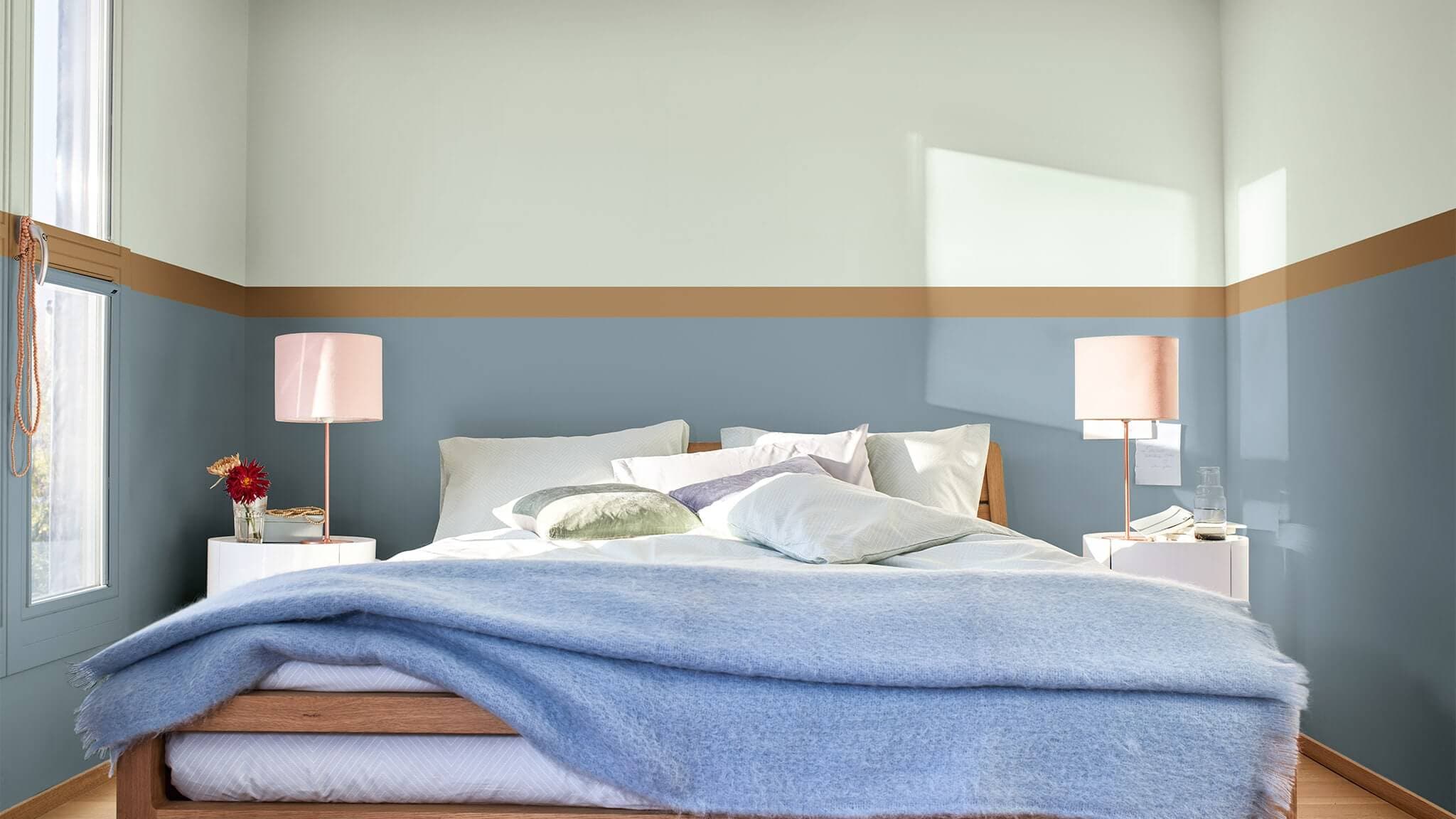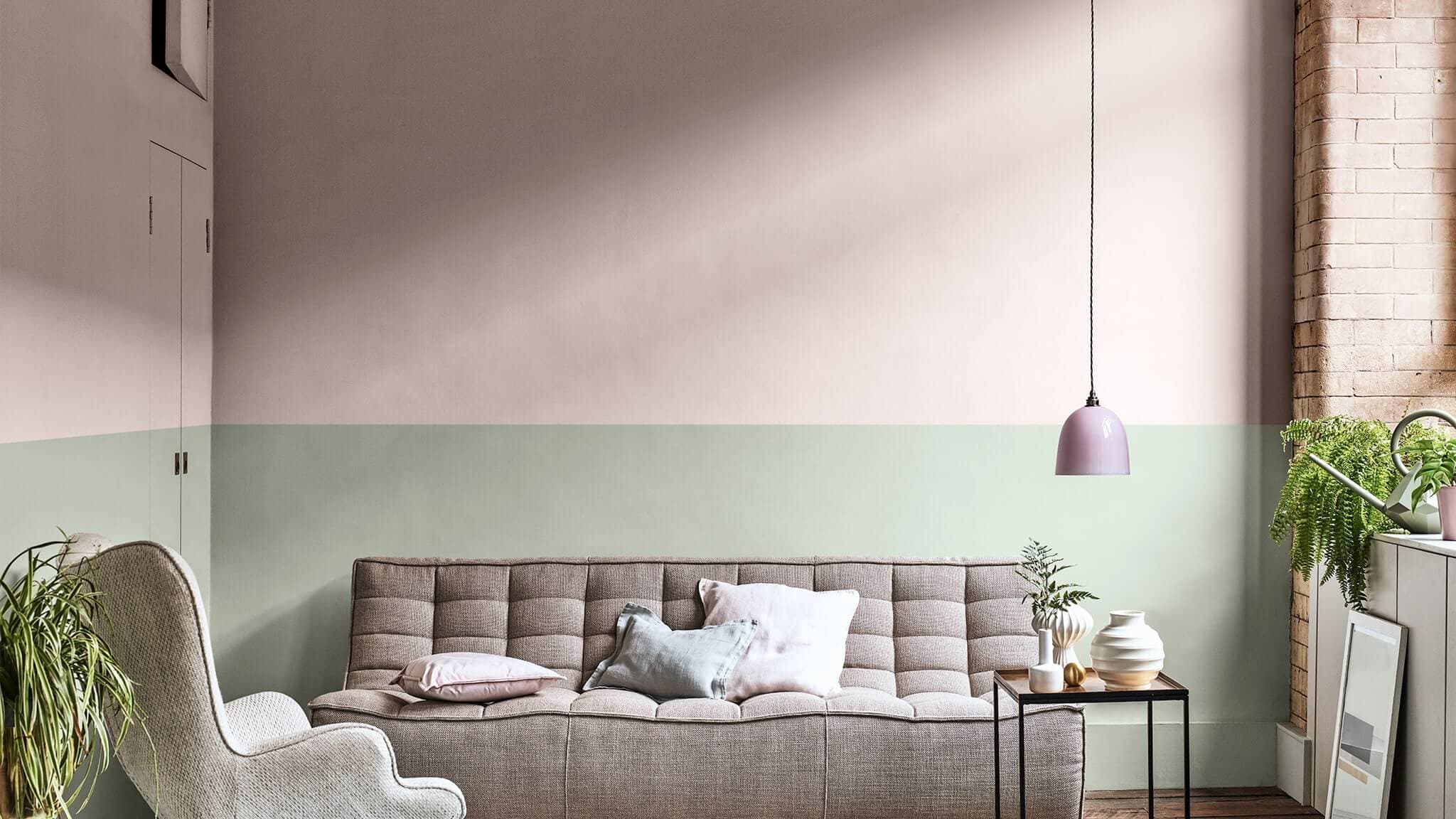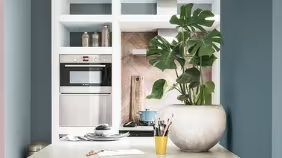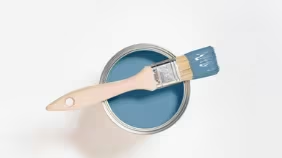Paint can have a transformative effect on any space. This simple split wall effect allows you to bring colour to your home and make a stylish statement worthy of a top interior designer, adding drama and depth to any room.
Before you get started, consider the height at which you’re going to split your wall. Dividing lines at picture rail or dado height nod to period features but in a contemporary way. Or you can think about the function of the room and the furniture that will occupy it, creating a line to frame a bed or sofa and create a strong and cohesive look.
Here’s how to transform your room with our simple step-by-step guide:
You will need:
- Make your colour choices
- A tin of each of your chosen paint colours
- A roller and tray
- Pencil
- Measuring tape
- String
- chalk
- Masking tape
- Paint brushes
- Narrowed it down to a few shades? Try them out with our mess-free and easy-to-use testers to select your perfect colour combination.
- Apply your main colour first, we’ve used Tranquil Dawn™, Colour of the Year 2020. Once the paint is completely dry, you’re ready to create your split wall.
- Chalk your line by measuring down from the ceiling and marking a few dashed pencil lines using the tape measure. Next, rub chalk along a length of string. Stretch the string across the wall and secure it with masking tape at each end. Check the string is straight, then ping it to leave a chalk line across the wall.
- Apply a strip of masking tape below the bottom line of chalk.
- Apply your second panel of paint and for a perfect finish, go just over the edge of the masking tape.
- Wait until the paint is still slightly wet, then peel away the masking tape to reveal your two-tone wall.
Need some more inspiration? Explore the beautiful colour combinations at work in these split-wall spaces
Create a hip, modern living room with a two-tone wall in pink and green
In the cool, industrial-inspired living room, a palette of offbeat pastels, including soft pink and our 2020 Colour of the Year, Tranquil Dawn™, introduce an airy element and create an inspiring split-effect combination for a living room.
To make the most of the high ceiling and fashionably low-slung sofa, the wall has been divided at a low level to create a stylishly laid-back atmosphere. Unfussy forms and comfortable seating in tactile wool combined with functional metal pieces and lush green plants create an ultra-relaxed space for modern living.
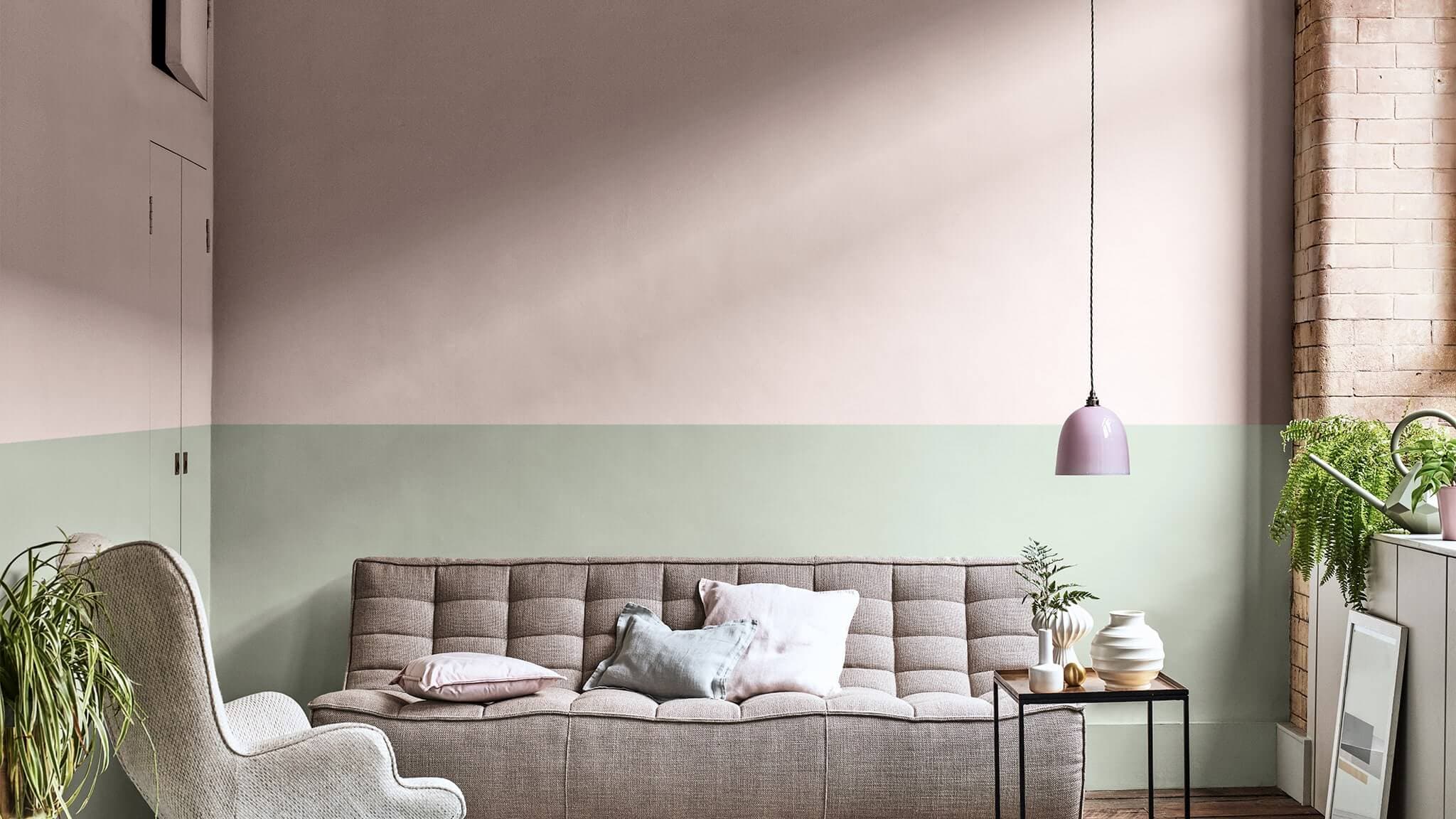
Which colours?
Combine soothing shades on a two-tone wall for a relaxed living space
In this light, airy living room, the palette of soft greens, including the Colour of the Year 2020, Tranquil Dawn™ – create a soothing two-tone combination for a relaxed and welcoming atmosphere.
Positioning the colour split towards the top of the wall simultaneously highlights the lofty proportions of this room and also makes it feel cozier and more human, bringing the focus back down to the comfortable contemporary furniture. Warm woods and heaps of casual cushions and throws, complete this calming space.
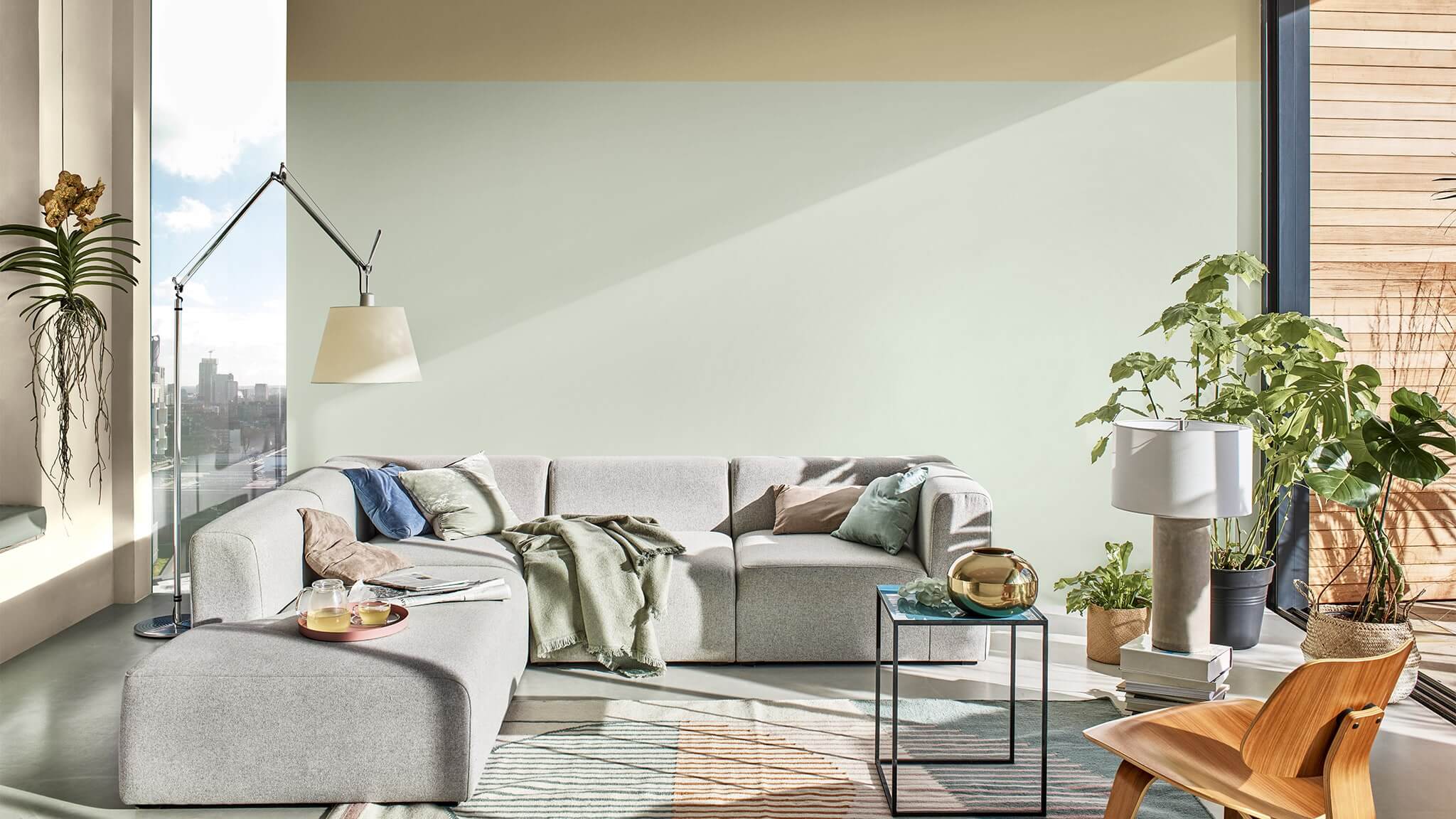
Which colours?
Combine ocher and green on a two-tone wall for a calming living room
Two-tone walls can help to create a defined zone, even in the smallest corner. Colour of the Year 2020, Tranquil Dawn™ brings an airiness to the space that is grounded by a panel of 2019’s Colour of the Year, Crème Brulee™. A slim light grey border between the two adds a sense of polish to the scheme.
Contemporary furniture and cozy accessories create a homely spot for reading and rest while a generous selection of plants introduce the mood-boosting element of nature.
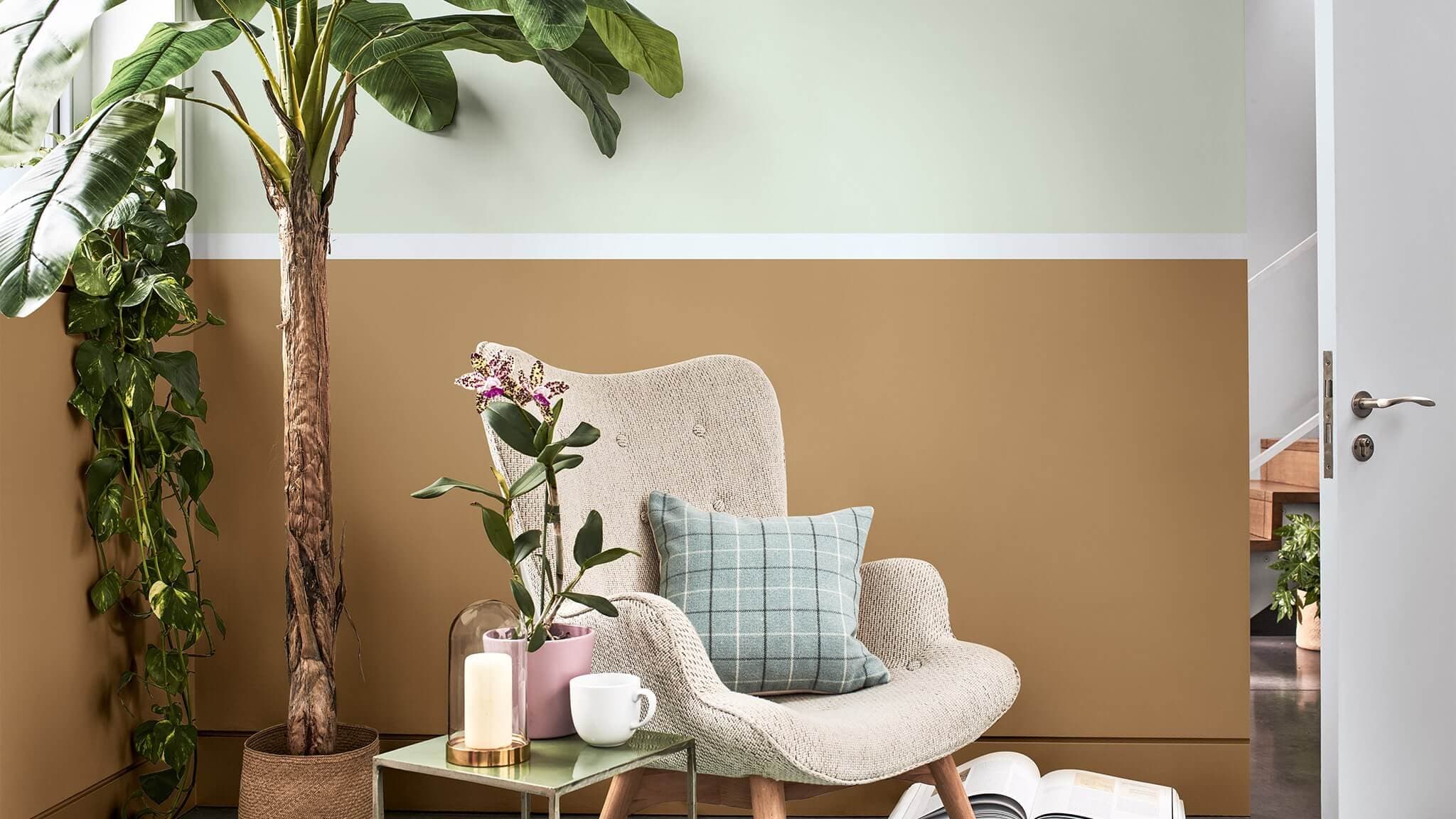
Which colours?
Create a relaxing bedroom with a two-tone wall in blue and green
A two-tone wall allows you to create your own focal point and make a statement in your room. In this space, the upper walls and ceiling have been painted in Colour of the Year 2020, Tranquil Dawn™. In the middle of the room, an eye-catching border of warm ocher defines the transition to a soothing grey-blue. This split effect with two colour combinations for bedroom walls brings the focus down to the lower half of the room and the simple wooden bed, making it clear that the purpose of this space is restorative relaxation.
